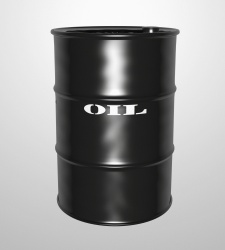
Regulators launched one of the biggest ever crackdowns on oil price manipulation, suing two well-known traders and two trading firms owned by Norwegian billionaire John Fredriksen.
The Commodity Futures Trading Commission (CFTC) said traders James Dyer of Oklahoma's Parnon Energy, and Nick Wildgoose of Europe-based Arcadia Energy, amassed large physical positions at a key U.S. trading hub to create the impression of tight supplies that would boost oil prices.
Later they dumped those barrels back onto the market, causing prices to crash and racking up profits from short positions they had accrued in futures markets, the suit said.
"Defendants conducted a manipulative cycle, driving the price of WTI (crude) to artificial highs and then back down, to make unlawful profits," the lawsuit filed in New York said.
While the civil suit comes after three years of heightened scrutiny into oil price speculation by the CFTC, it also arrives at a time when President Barack Obama is seeking to reassure Americans he is trying to curb high U.S. gasoline prices and ensure they aren't subject to manipulation.
The suit names two traders familiar to U.S. oil market veterans, who recall Dyer and Wildgoose from their days as high-flying traders at BP Plc in the early 2000s, when the British oil giant's trading practices were under scrutiny due to its large ownership of oil tanks at Cushing, Oklahoma, the delivery point for U.S. oil futures.
BP was hit with a record $2.5 million fine by the New York Mercantile Exchange in 2003 for alleged U.S. oil market manipulation, which it paid without admitting any wrongdoing. That case did not include any allegations of misconduct by Dyer or Wildgoose.
Both Parnon and Arcadia are controlled by shipping magnate Fredriksen, who was born in Norway but is based in Cyprus, and whose $10.7 billion fortune placed him at number 72 in the latest Forbes list of the world's billionaires.
The lawsuit says that the CFTC may seek damages of as much as triple the monetary gains derived from the illicit trading violations, among other potential fines and injunctions. If the CFTC won damages of $150 million it would match the second-largest fine in the agency's history.
A CFTC spokesman declined comment on the specific damages it would seek in the suit. In the past, the CFTC has had a hard time winning manipulation cases, although U.S. financial reforms last year gave it broader powers to get tough.
While the trading strategy itself focused mainly on oil futures' price spreads, or time spreads, rather than outright prices of crude, the alleged scheme occurred in a year when global oil prices experienced their largest swings ever.
The CFTC said the traders aborted the trading strategy after April 2008, when they learned of regulators' investigations. Just months later U.S. oil prices surged to a record $147 a barrel, then crashed to nearly $30 a barrel by the end of the year.
Sought for comment, officials at Arcadia and Parnon did not return phone calls. Wildgoose, Dyer and Fredriksen were not immediately reachable.
LOSS LEADER
Using positions in physical markets -- and even making a loss in physical trading -- to gain profits in derivative markets is not an uncommon phenomenon in oil markets.
The CFTC explained that the traders' "repeated conduct lead to at least a physical WTI trading loss of over $15 million. However, the artificial spread prices that were created as a result of Parnon/Arcadia's physical trading created profits of over $50 million in their WTI Derivative positions."
In the early 2000s, oil market trading plays known as "squeezes" were commonplace on both sides of the Atlantic, and BP was known as one of the most aggressive traders, using its control of important physical assets like the Forties pipeline that transports Europe's benchmark Brent crude, and the tanks that store crude at Cushing for leverage on paper positions.